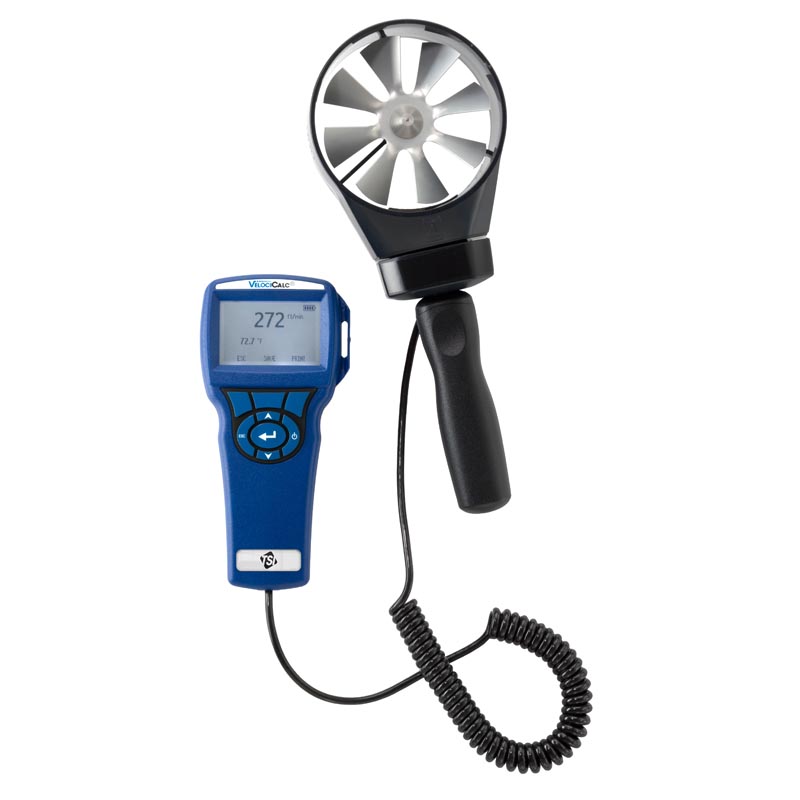Comparing Digital and Mechanical Anemometers: Which is Right for You?
Comparing Digital and Mechanical Anemometers: Which is Right for You?
Blog Article
All You Required to Know About Anemometers: How They Work, Why They Issue, and Where to Use Them
Anemometers, however commonly ignored in the world of scientific tools, play a vital duty in different areas, providing valuable understandings right into wind speed and air flow patterns. As we dig right into the details of anemometer technology, we will discover the inner operations of these tools, their relevance, and the key considerations when selecting the right anemometer for details applications.

Anemometer Basics
A vital instrument utilized to determine wind rate and direction, the anemometer plays a crucial function in weather forecasting and various markets. An anemometer generally includes three or 4 mugs that rotate in the wind, a vane that aims right into the wind, and sensing units to track the turnings or activities. By calculating the turnings or movements over a particular period, the anemometer can identify wind speed. The vane aids identify wind direction by pointing into the wind, offering valuable data for weather condition projecting, aeronautics, maritime operations, ecological monitoring, and wind power applications.
There are different kinds of anemometers offered, including mug anemometers, vane anemometers, hot-wire anemometers, and sonic anemometers, each with its unique functions and applications. Mug anemometers are commonly utilized for fundamental wind speed dimensions, while vane anemometers are chosen for directional measurements.
Concepts of Anemometer Procedure
Building on the foundational understanding of anemometer basics, the concepts of anemometer operation elucidate the technicians behind wind speed and direction dimensions. Cup anemometers, for instance, have 3 or more mugs that catch the wind, causing them to rotate quicker as the wind speed rises. Hot-wire anemometers depend on a warmed cable that cools down as wind passes over it, with the rate of cooling down identifying the wind rate.
Relevance of Anemometers
Anemometers play a vital role in measuring wind speed and direction, offering essential information for weather projecting, climate studies, ecological monitoring, and aviation operations. Meteorologists rely on anemometers to gather exact wind information, website link assisting them comprehend climate patterns, forecast tornados, and issue timely warnings to the public. Wind farm operators use anemometers to analyze wind conditions and take full advantage of electricity manufacturing from wind turbines.
Applications Throughout Numerous Industries
In the eco-friendly power industry, anemometers play an essential role in evaluating wind problems for wind farm placements, making certain ideal power production. Industries like building and mining use anemometers to keep an eye on wind speeds, important for security methods, particularly when working at elevations or in open-pit mines where strong winds can present hazards. find more information In farming, anemometers aid farmers in taking care of plant splashing you could try these out by supplying real-time data on wind speed to prevent drift.

Choosing the Right Anemometer for Your Requirements
For basic functions, a mug anemometer is suitable for measuring wind speed, while a vane anemometer gives wind instructions information. Hot-wire anemometers are suitable for low airspeed measurements, and ultrasonic anemometers offer high accuracy and sturdiness.

Conclusion
Finally, anemometers play a vital role in determining wind rate and instructions across different sectors. Understanding the concepts of anemometer operation is crucial for choosing the right tool for certain requirements. From meteorology to aviation, anemometers are important devices for accumulating exact information and making sure safety in different applications. It is vital to think about the importance of anemometers in order to make informed choices when choosing one of the most suitable gadget for gauging wind conditions.
There are different types of anemometers offered, consisting of mug anemometers, vane anemometers, hot-wire anemometers, and sonic anemometers, each with its unique features and applications. Mug anemometers are generally utilized for basic wind speed dimensions, while vane anemometers are favored for directional dimensions. Hot-wire anemometers are ideal for reduced airspeeds, and sonic anemometers are perfect for high-precision dimensions in research study and commercial setups.Building on the fundamental understanding of anemometer essentials, the concepts of anemometer operation elucidate the mechanics behind wind speed and instructions measurements. For basic functions, a cup anemometer is appropriate for determining wind speed, while a vane anemometer provides wind direction information.
Report this page